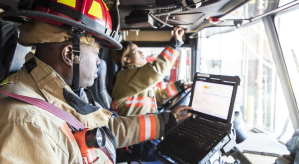AI-enhanced 911 tools help Colorado city keep up with growing population

With a population of nearly 400,000, Aurora, Colorado, is the third-largest city in the state, and steadily growing, which presents challenges for emergency services. Tina Buneta, director of Aurora 911, said new technology purchased by the city is solving challenges presented by language barriers, needs for real-time situational awareness and managing surges of incoming calls during emergencies.
This week, RapidSOS, a company that provides public safety software to Aurora emergency call centers, launched several new AI-enhanced tools for unified reporting, intended to improve situational awareness for emergency responders.
Previously, when non-English speakers called 911 in Aurora, their calls were transferred to an off-site language interpreting service, Buneta said. The slow exchange often delayed response and sometimes resulted in misunderstandings.
“We have over 162 documented spoken languages and within our school system, so we’re very uniquely diverse,” Buneta told StateScoop in a recent interview. “While we were able to create mechanisms to deploy resources, in order to do it expeditiously, we were going in blind and not fully understanding the situation.”
Now, with artificial intelligence, Buneta said, call centers can translate in real-time, resulting in more accurate communication and faster response times.
“We’re not guessing or speculating,” she said. “We’re actually making the decision based on what’s actually happening in the moment.”
Another new tool from Rapid SOS is unified reporting, which allows administrators to aggregate incident data into analytics reports so they can make better informed decisions and allocate resources. Buneta said she likes that the tool’s data collection is designed not to fumble during increased call surges during large-scale emergencies like wildfires, a pain point for the city’s emergency services.
“What we find is that we have surges of contacts in the 911 that frequently push us to exceed our available staffing,” said Buneta.
Without real-time location tracking, receiving too many calls during emergencies that affect many parts of the city can create more obstacles for emergency responders who are attempting to deliver services quickly, she added.
“We have the ability to track the location of body-cameras that are placed on every officer in our law enforcement organization,” she said. “So if something doesn’t go right and that officer needs assistance, we can send help, because at the end of the day, our goal is that everyone goes home to their family.”






